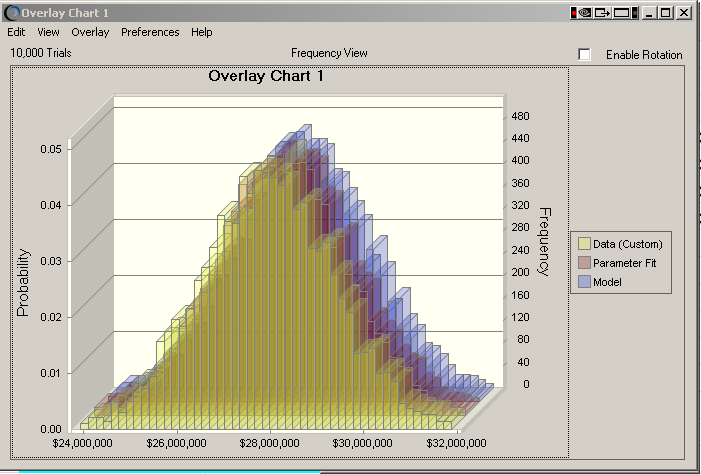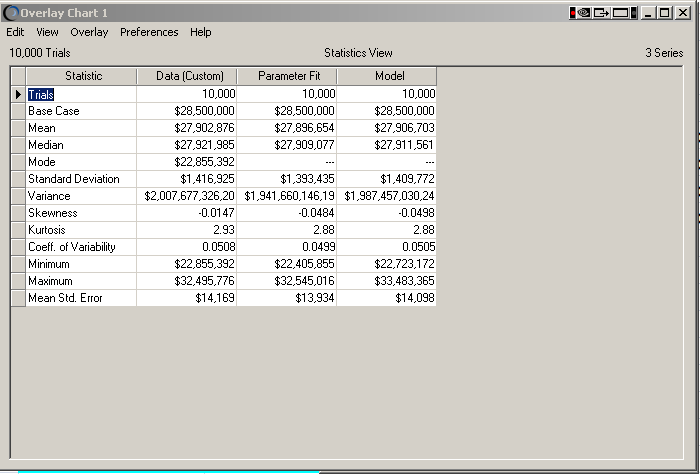Jun
10
2010
Oracle Crystal Ball has finally released its latest version of its industry leading Monte-Carlo tool. Essentially 3 features were added to the Fusion Edition.
Oracle Crystal Ball has finally released its latest version of its industry leading Monte-Carlo tool. Essentially 3 features were added to the Fusion Edition.
Predictor Integration with Planning and Essbase
The first is for the EPM users who want to do time series analysis without too much heart ache. Predictor is a tool that uses 8 different time series methods including: Box Winters, Holts Seasonal Additive, Exponential Smoothing and Double Exponential Smoothing and Linear Regression.
- Crystal Ball's time series forecasting tool can now use ranges that come directly from EssBase SmartSlices & Hyperion Planning Forms
- Forecast Assumptions can be pasted back into the EssBase or Planning form for simulation at the server level
COOL FEATURE ALERT: Define Assumptions from Forecasts
We wrote a blog post on how to accomplish sequential simulation a while back that covered taking the results of one model to feed another using Crytal Ball's VBA dev. Kit. Using Savage's concept of Stochastic Information Packets (SIPS), Crystal Ball will fit a distribution using either a Parametric or Non-Parametric Approach - which is then used to feed another model. This is very easy to do right after a simulation.

It seems to work pretty well… I tested a very simple model to compare the output of the original model against the parametric and non-parametric fits.

Sample Model: Test Formula = 95 000 (assumptions) * 0.3

Overlay Chart of the Parametric, Non-Parametric and Model Outputs for Crystal Ball

Comparing Crystal Ball's Distribution Fit Values
Updated Scenario Analysis Tool
They have updated the interface for the scenario analysis tool. The scenario tool outputs the trial values (sorted by percentile) from a simulation for analysis in Excel. This is done to generate model data or plot charts.
Other Notable points
- Window 7 Compatible
- Crystal Ball is available in Spanish and Japanese
- New Accessibility Features : New Accessibility Features enabling individuals who rely on assistive technologies such as screen readers and screen magnifiers to more effectively use the software.